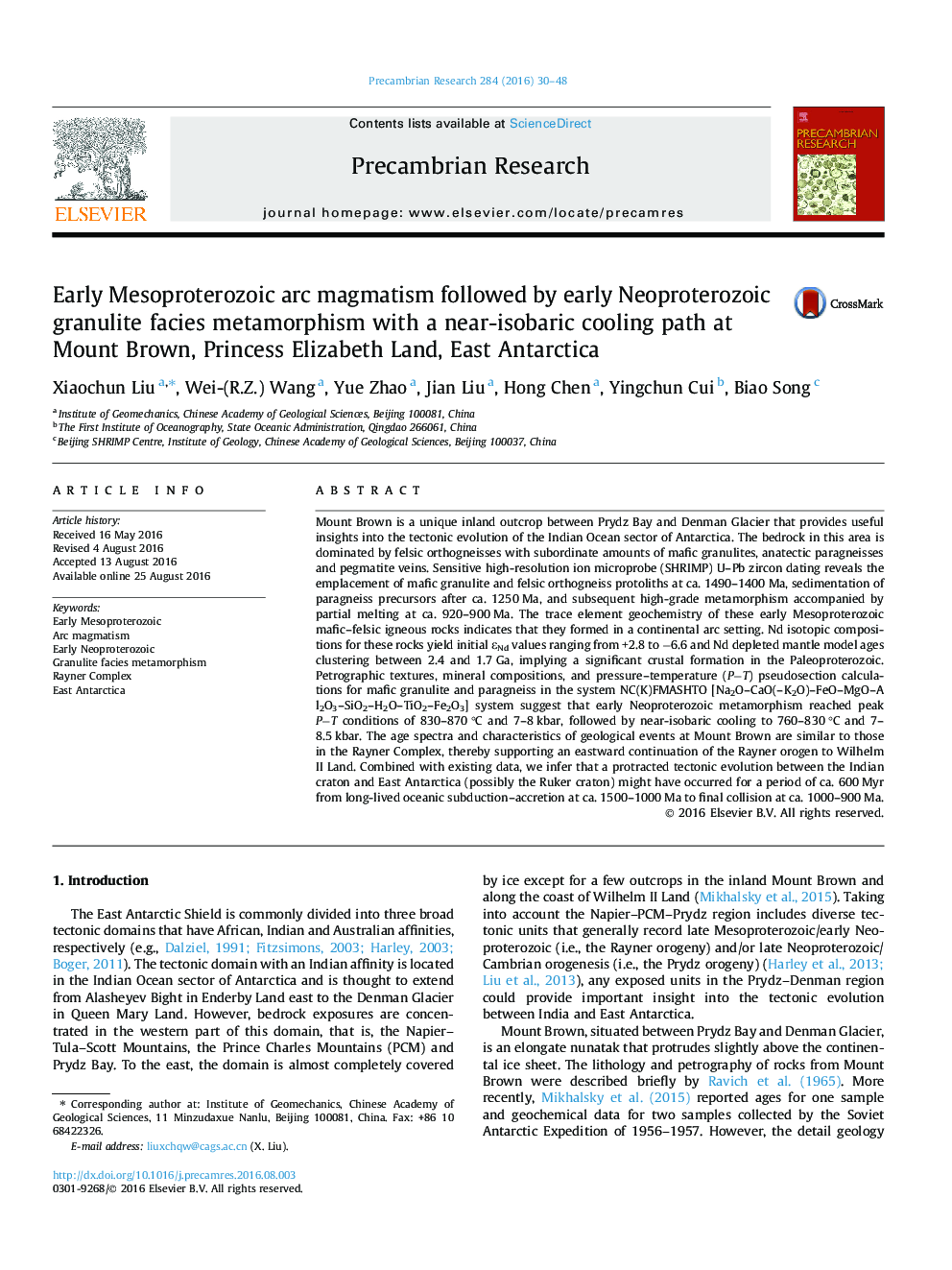| کد مقاله | کد نشریه | سال انتشار | مقاله انگلیسی | نسخه تمام متن |
|---|---|---|---|---|
| 4722276 | 1639591 | 2016 | 19 صفحه PDF | دانلود رایگان |

• Arc magmatism at Mount Brown took place at ca. 1490–1400 Ma.
• Granulite facies metamorphism with an near-isobaric cooling path occurred at ca. 920–900 Ma.
• Mount Brown represents the earliest portion of the long-lived Rayner continental arc.
• The tectonic evolution of the Rayner orogen might have lasted for ca. 600 Ma.
Mount Brown is a unique inland outcrop between Prydz Bay and Denman Glacier that provides useful insights into the tectonic evolution of the Indian Ocean sector of Antarctica. The bedrock in this area is dominated by felsic orthogneisses with subordinate amounts of mafic granulites, anatectic paragneisses and pegmatite veins. Sensitive high-resolution ion microprobe (SHRIMP) U–Pb zircon dating reveals the emplacement of mafic granulite and felsic orthogneiss protoliths at ca. 1490–1400 Ma, sedimentation of paragneiss precursors after ca. 1250 Ma, and subsequent high-grade metamorphism accompanied by partial melting at ca. 920–900 Ma. The trace element geochemistry of these early Mesoproterozoic mafic–felsic igneous rocks indicates that they formed in a continental arc setting. Nd isotopic compositions for these rocks yield initial εNd values ranging from +2.8 to −6.6 and Nd depleted mantle model ages clustering between 2.4 and 1.7 Ga, implying a significant crustal formation in the Paleoproterozoic. Petrographic textures, mineral compositions, and pressure–temperature (P−T) pseudosection calculations for mafic granulite and paragneiss in the system NC(K)FMASHTO [Na2O–CaO(–K2O)–FeO–MgO–Al2O3–SiO2–H2O–TiO2–Fe2O3] system suggest that early Neoproterozoic metamorphism reached peak P−T conditions of 830–870 °C and 7–8 kbar, followed by near-isobaric cooling to 760–830 °C and 7–8.5 kbar. The age spectra and characteristics of geological events at Mount Brown are similar to those in the Rayner Complex, thereby supporting an eastward continuation of the Rayner orogen to Wilhelm II Land. Combined with existing data, we infer that a protracted tectonic evolution between the Indian craton and East Antarctica (possibly the Ruker craton) might have occurred for a period of ca. 600 Myr from long-lived oceanic subduction–accretion at ca. 1500–1000 Ma to final collision at ca. 1000–900 Ma.
Journal: Precambrian Research - Volume 284, October 2016, Pages 30–48